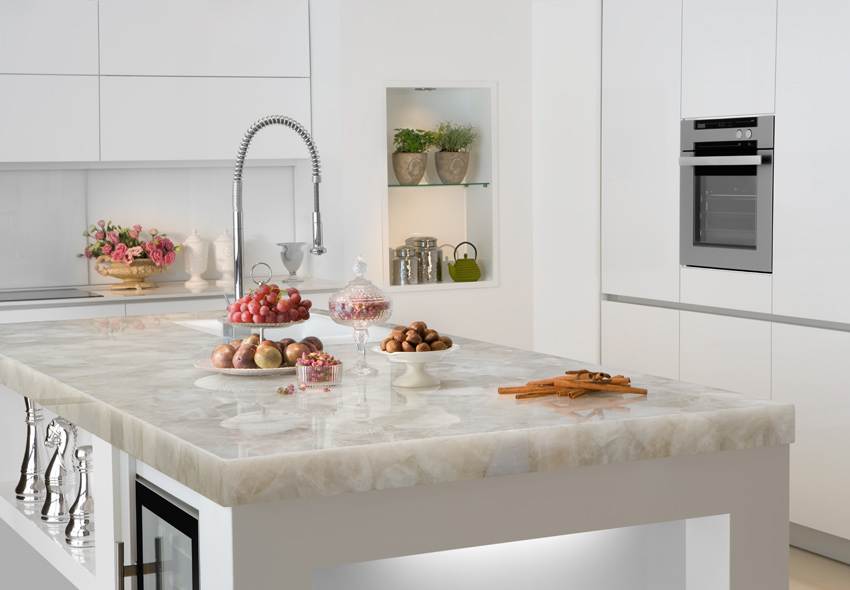Granite countertops symbolize strength, luxury, and long-term beauty in modern homes. But despite their rugged nature, they’re not invincible. Without the right care, your once-polished granite surface can lose its shine, stain, or even suffer damage from harsh chemicals.
In this guide, you’ll learn how to clean granite countertops properly—from everyday maintenance to treating stubborn stains—so your kitchen or bathroom surface stays in prime condition for years to come.
Understanding Granite: Why Cleaning Matters
Granite is a natural igneous rock made of quartz, feldspar, and mica, making it extremely durable. Its non-uniform pattern, deep veining, and wide range of colors make each slab unique. But granite is also porous by nature, meaning it can absorb liquids and oils unless properly sealed.
Over time, exposure to the wrong substances or abrasive cleaning methods can wear down the protective seal, dull the finish, and leave permanent marks. That’s why it’s important to clean granite surfaces with care and consistency.
Everyday Cleaning: Simple Steps for a Spotless Finish
Maintaining your granite countertops doesn’t need to be time-consuming. For day-to-day cleaning:
- Wipe down after use with a soft microfiber cloth.
- Mix warm water with a few drops of mild dish soap.
- Use a non-abrasive sponge or soft cloth to clean the surface.
- Rinse the area with clean water to remove soap residue.
- Dry thoroughly with a fresh microfiber towel to prevent water spots.
Avoid leaving puddles or standing water on granite—it can degrade the sealer over time.
Cleaning Tools and Products That Are Safe for Granite
Using the right tools and cleaners will protect your granite’s finish. Here’s what’s safe:
- Soft microfiber cloths
- pH-neutral dish soap
- Designated granite cleaners (look for non-acidic, non-abrasive options)
- Warm water
- Stone-safe polish (used occasionally for extra shine)
Avoid any cleaner that contains:
- Vinegar
- Ammonia
- Lemon juice
- Bleach
- Abrasive powders or scrubbing pads
These substances can eat away at the sealant or leave dull marks on the surface.
Deep Cleaning Granite: Weekly or Bi-Weekly Routine
A deeper clean every week or two helps keep buildup at bay. For this, you can use a granite-specific cleaner or make your own natural solution:
DIY Granite Spray Cleaner
- 1 cup warm water
- 1 tablespoon isopropyl alcohol (70% or less)
- A few drops of mild dish soap
- Optional: a few drops of essential oil (for fragrance)
Mix in a spray bottle and shake before each use. Spray, wipe with a microfiber cloth, and buff dry.
Tackling Sticky Messes and Dried Spills
Dried food, sticky residues, or stubborn grime can be safely removed without scratching your granite.
How to clean dried spills:
- Soften the area with a warm, damp cloth for 2–3 minutes.
- Gently use a plastic scraper or spatula to lift the debris.
- Clean with soapy water and rinse.
- Dry with a microfiber towel.
Avoid sharp tools or steel wool, which can scratch or dull the polished surface.
Dealing with Stains on Granite Surfaces
Even sealed granite can occasionally stain, especially from oil, wine, or acidic food. Here’s how to deal with the most common culprits:
Oil-Based Stains (grease, butter, cooking oil)
- Make a paste using baking soda and water.
- Spread the stain and cover with plastic wrap.
- Let it sit for 12–24 hours.
- Wipe off and rinse thoroughly.
Organic Stains (coffee, wine, fruit juice)
- Use hydrogen peroxide mixed with baking soda to form a paste.
- Apply the same way as above.
- Repeat if needed for stubborn discoloration.
Always spot test your cleaning mixture in a hidden corner before applying it to visible areas.
Can You Use Natural Cleaners on Granite?
While natural cleaners like vinegar or lemon juice are popular for many surfaces, they are not safe for granite. Their high acidity can eat away at the stone’s sealant and cause etching.
Instead, stick with baking soda-based mixtures and isopropyl alcohol diluted with water—these are effective and safe for sealed granite.
Preventing Damage: Granite Cleaning Do’s and Don’ts
| Do | Don’t |
| Use cutting boards and coasters | Cut directly on the granite |
| Clean spills immediately | Let wine, oil, or acids sit too long |
| Use mild, pH-balanced cleaners | Use vinegar, bleach, or ammonia |
| Reseal granite annually (if needed) | Assume the original seal lasts forever |
| Dry the surface after cleaning | Air-dry and leave water spots behind |
These basic practices will keep your granite countertops looking new year after year.
How Often Should You Reseal Granite Countertops?
Depending on the type of granite and sealant, most countertops should be resealed every 1–2 years. High-use kitchens may require resealing more frequently.
Simple water test:
- Drip a few drops of water on the granite.
- If it beads up, your seal is intact.
- If it darkens or absorbs, it’s time to reseal.
You can reseal granite yourself using a penetrating granite sealer, or hire a professional for a long-lasting finish.
Bonus: Quick Shine Without Polishes
Want to boost your granite’s shine between polishes?
- Use a dry microfiber cloth to buff the surface in circular motions.
- Add a tiny drop of cooking oil to the cloth for a natural-looking gloss (wipe excess immediately).
This trick is great for making your granite look fresh before guests arrive!
Conclusion
Granite countertops may be tough, but they still need proper care to maintain their beauty. With regular cleaning, safe products, and a little attention to spills and stains, you can keep your granite looking as good as the day it was installed.
Stick with mild soaps, soft cloths, and the occasional DIY or granite-specific cleaner, and you’ll protect your investment for the long haul.
Whether it’s a quick daily wipe or a deep clean after a holiday feast, these best practices will help you clean granite countertops the right way—safely, effectively, and without stress.


